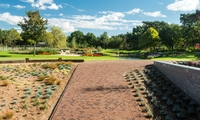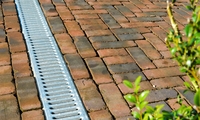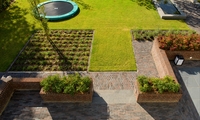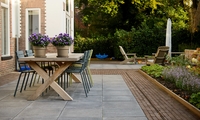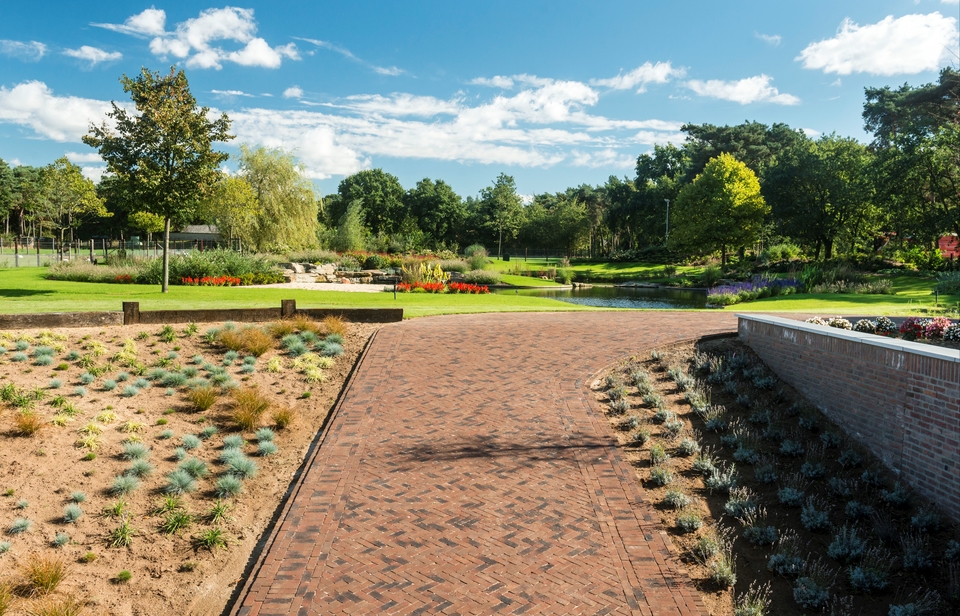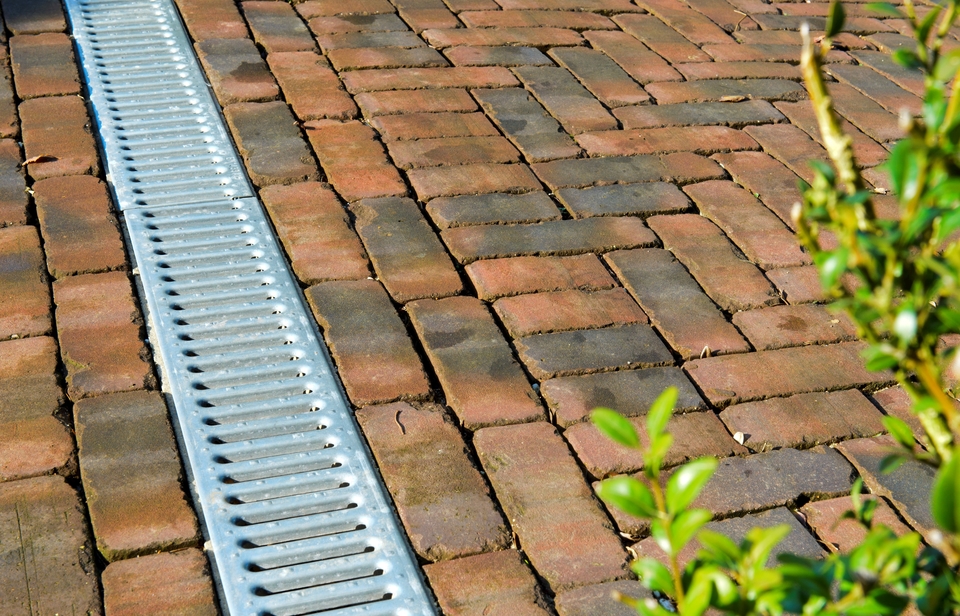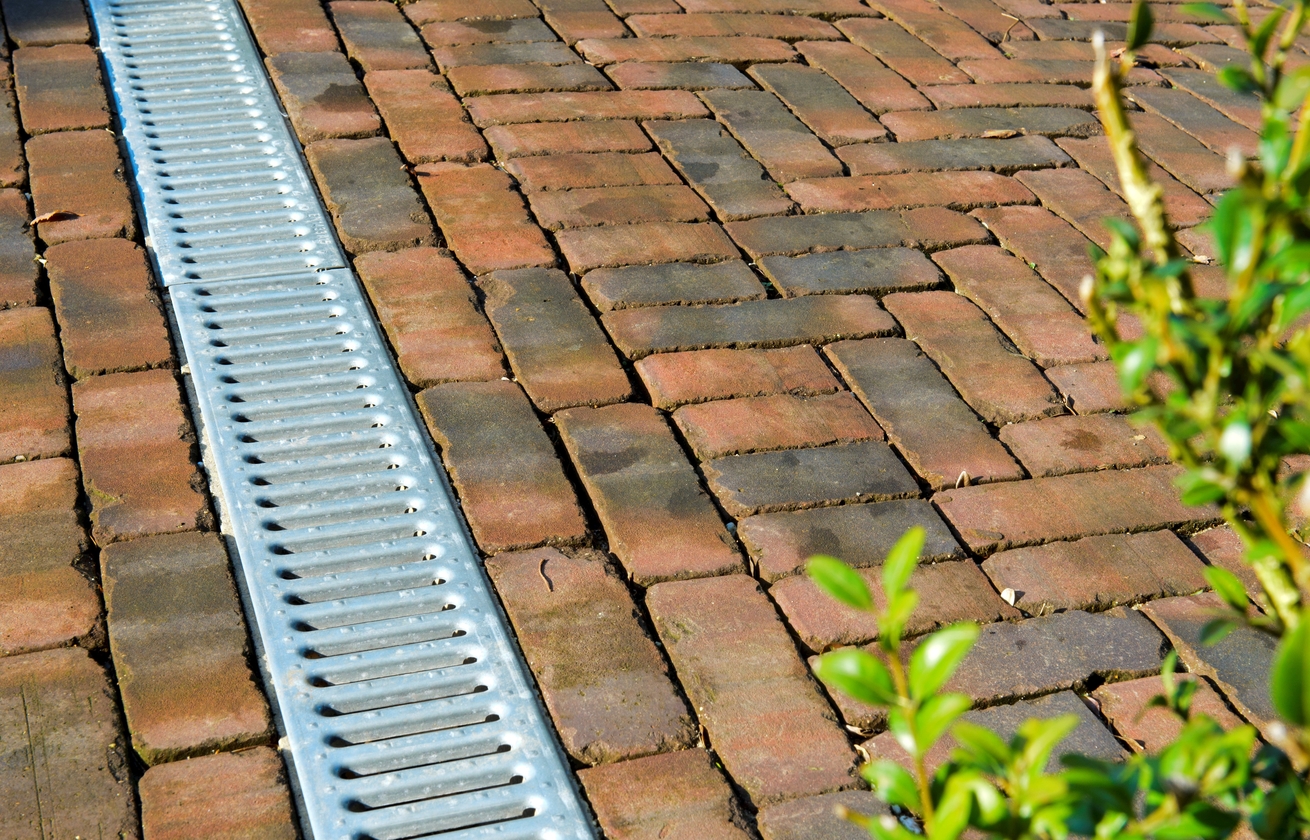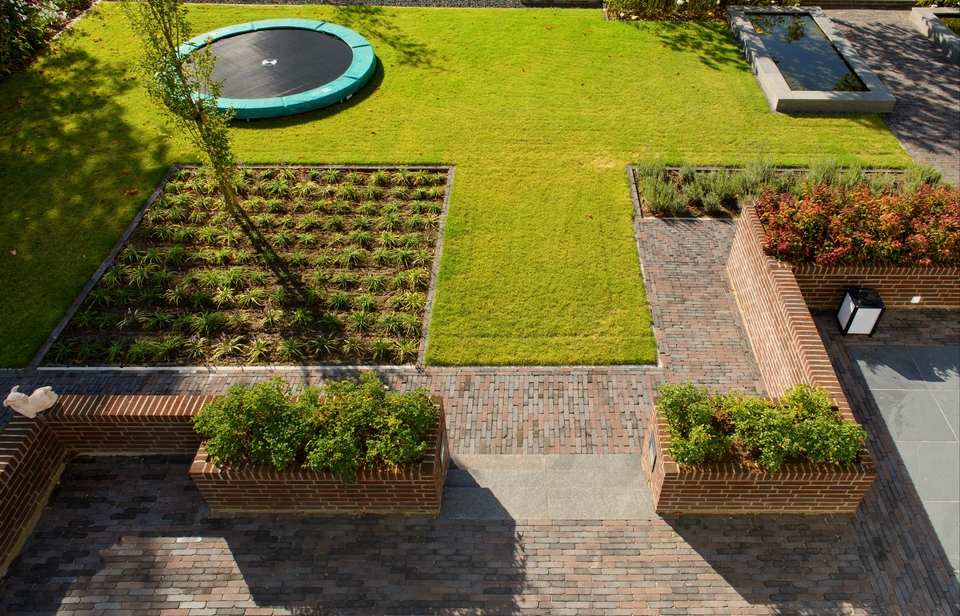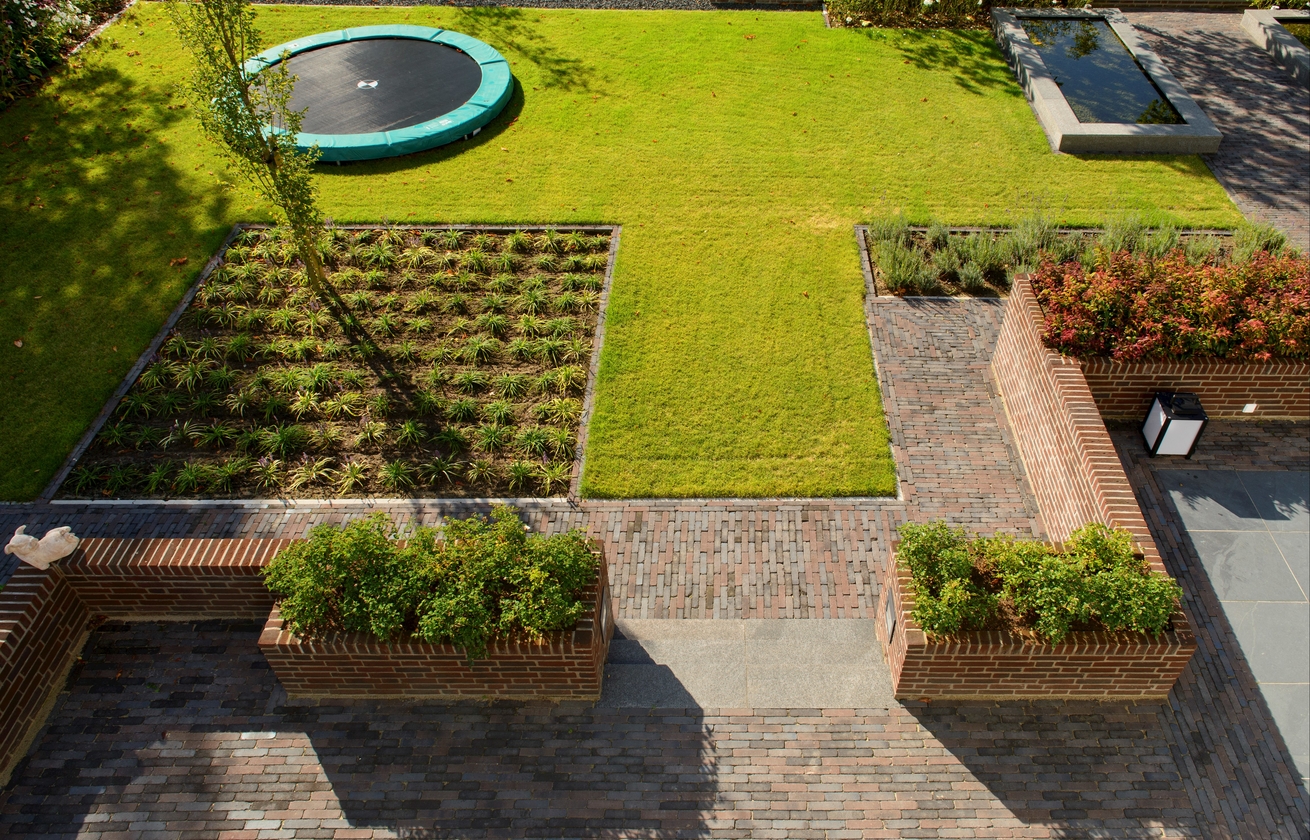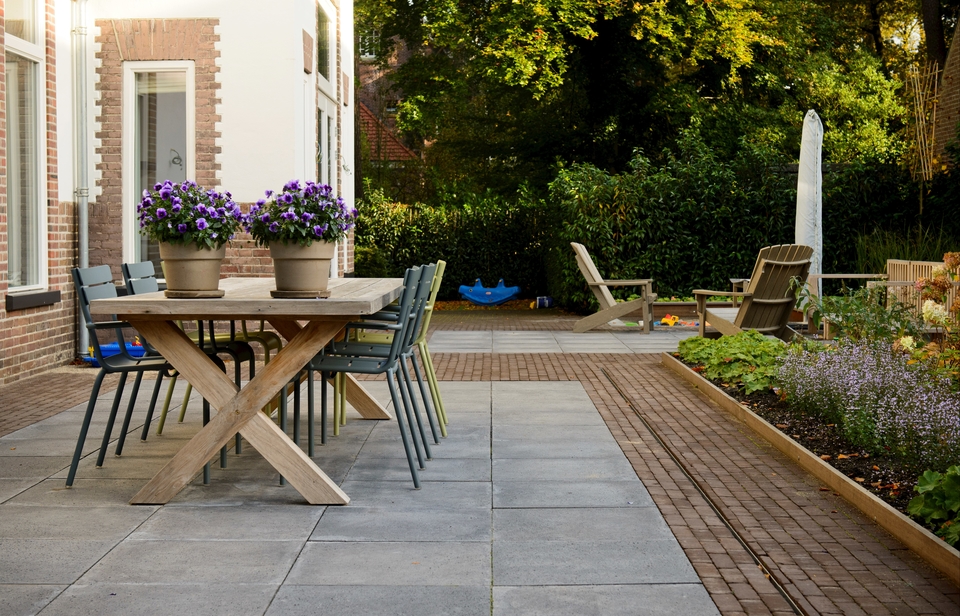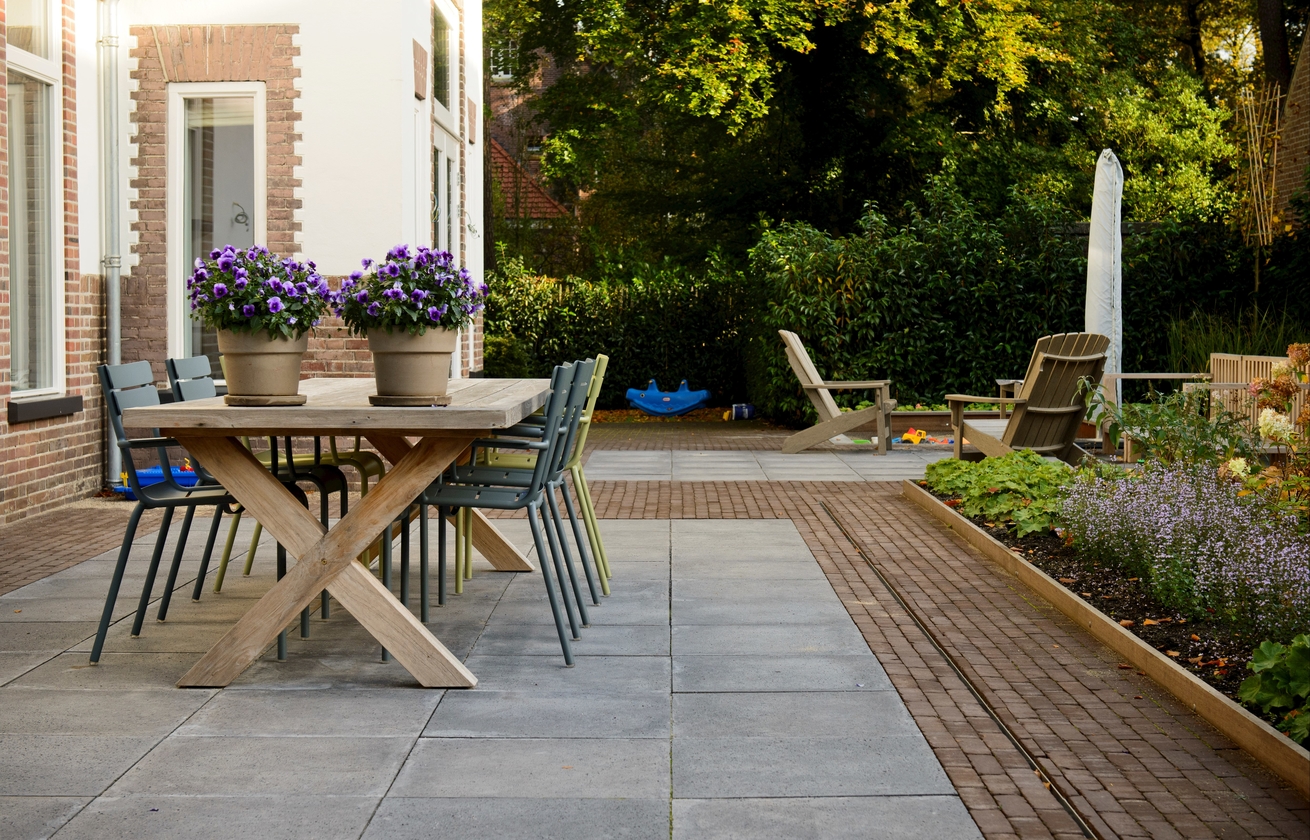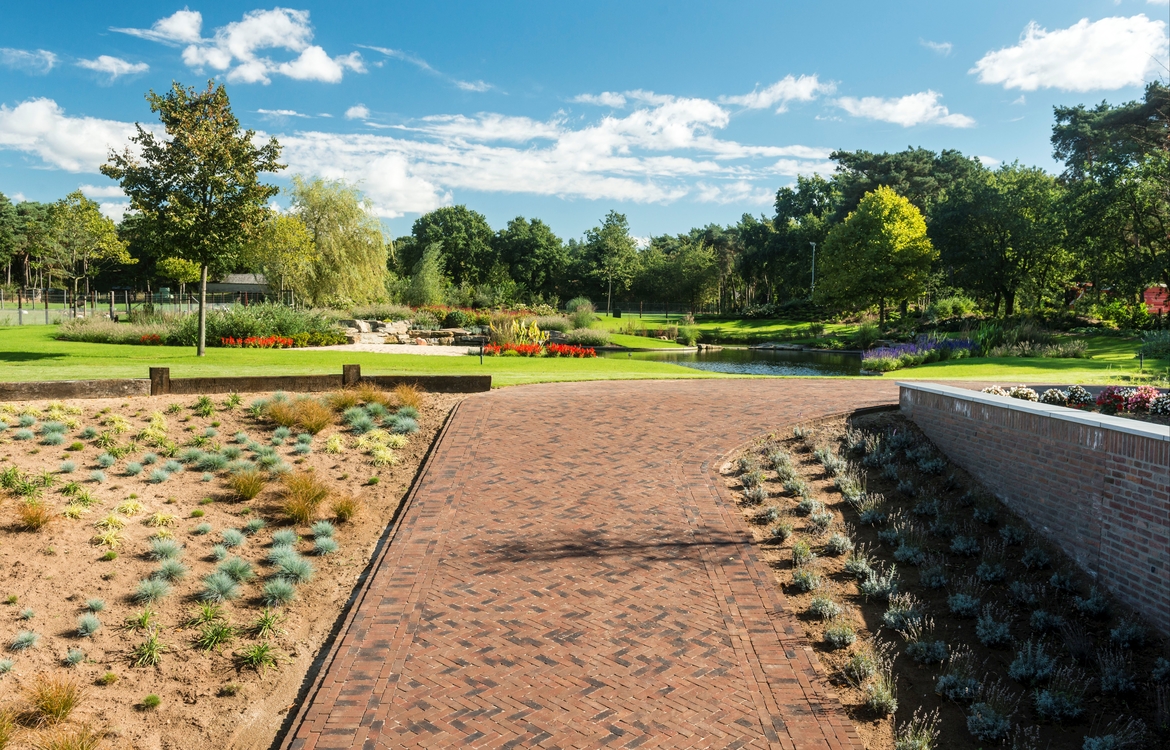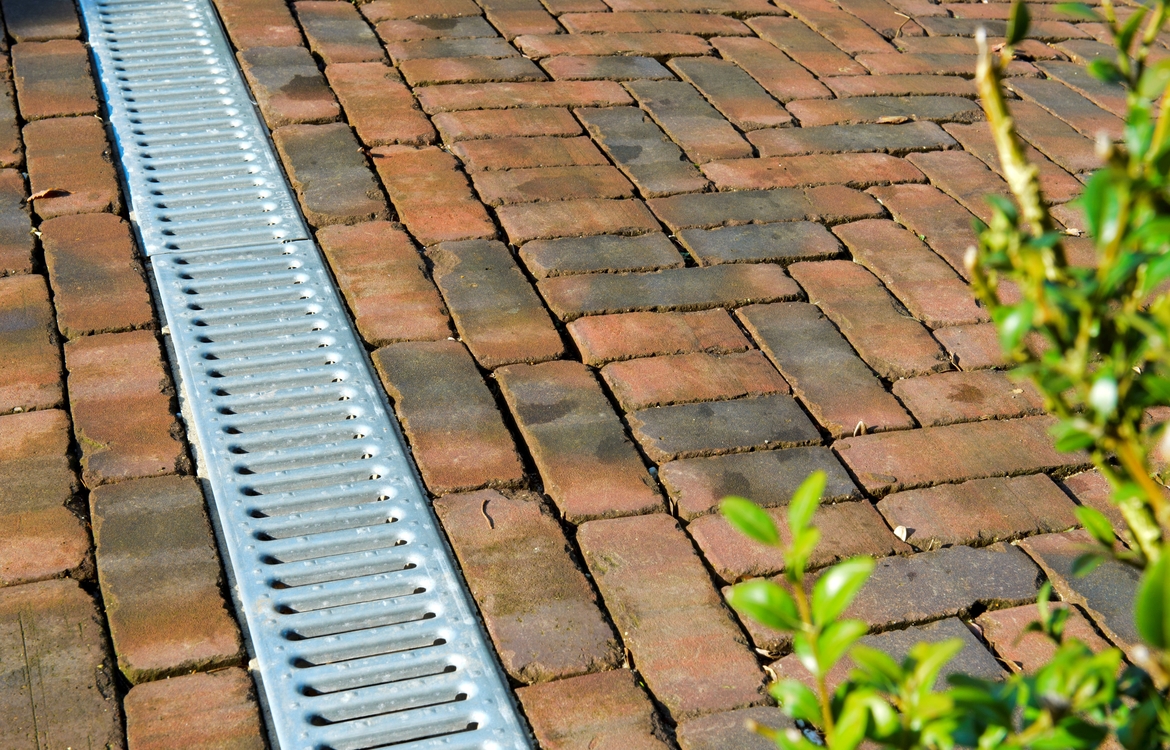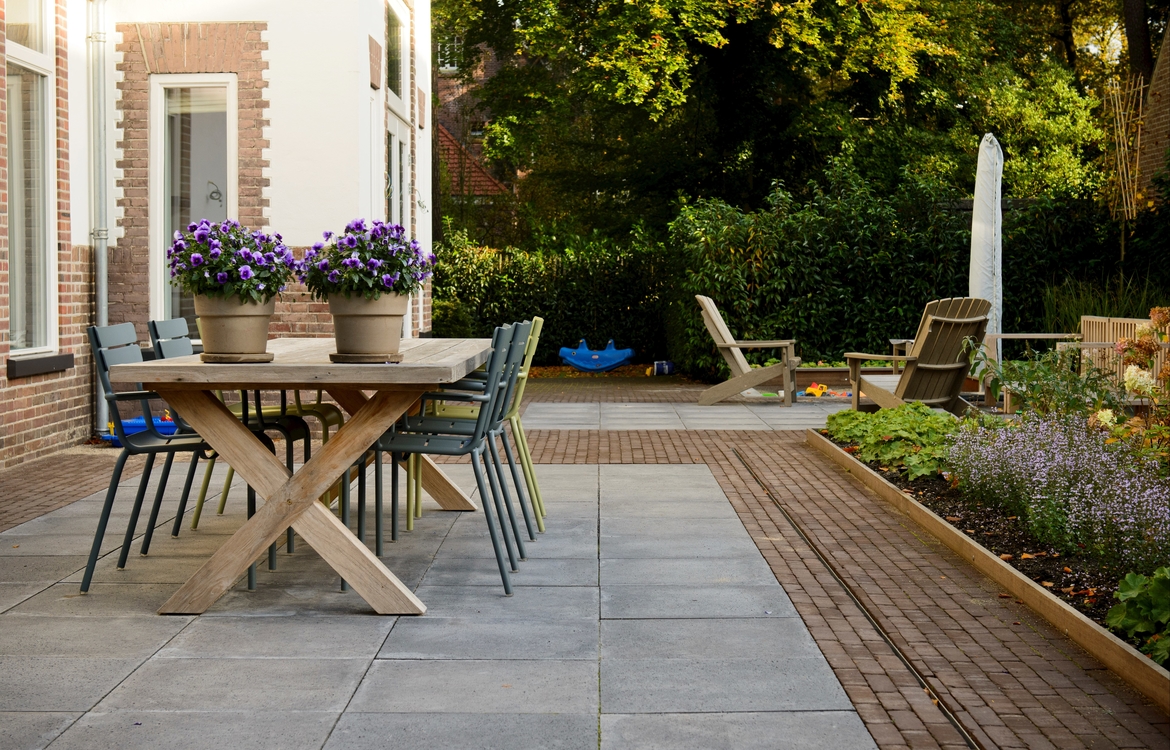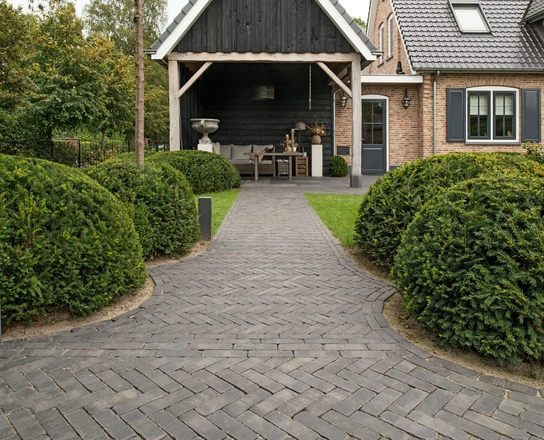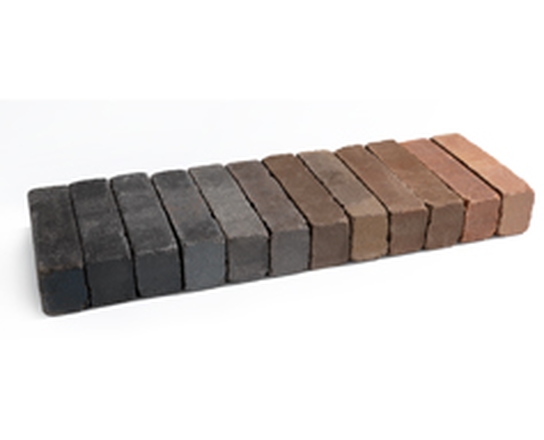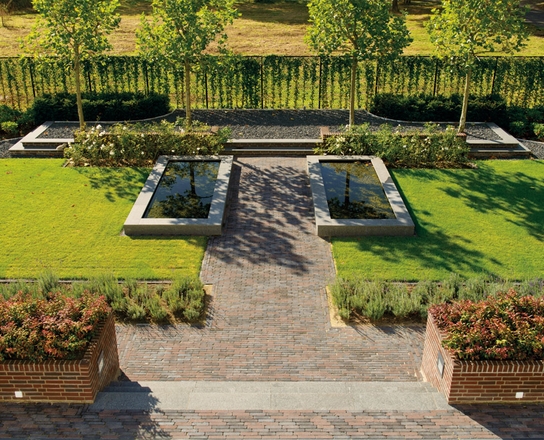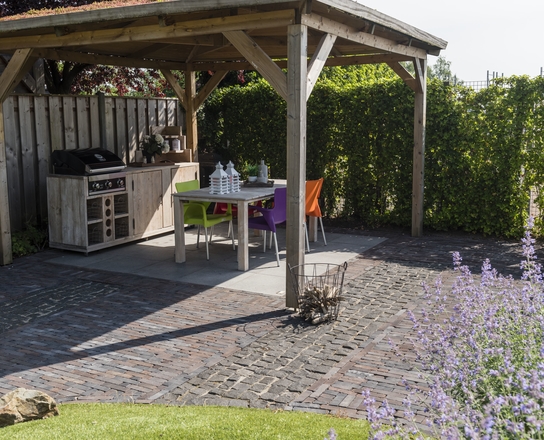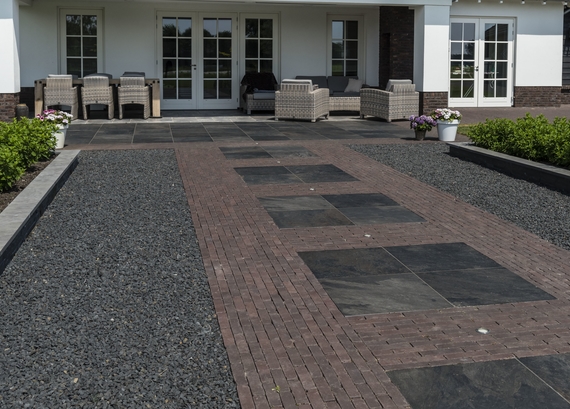
The possibilities of garden paving
If you want to pave your driveway, garden path, or patio, there are a range of options to choose from, including clay pavers, natural stone and concrete slabs, gravel, shells, wooden boards, or wood chips. Each material has its own look and offers different options. Choose the paving that best suits your garden.
Clay pavers
Clay pavers are ideal for any type of garden, as they are both timeless and of high quality. Clay pavers are available in different sizes, colours, and finishes. In modern gardens, black pavers are an excellent choice. Pavers with more of a red or brown colour give a warmer feeling and are perfect for romantic and country gardens.
Like natural stone, clay pavers are a 100% natural product. They are made from clay, some of which is extracted from rivers in the Netherlands. The production process is slightly more demanding on the environment than that for natural stones. Clay is a renewable material, and its extraction helps to create new natural areas in the Netherlands. The stones typically last for 135 years, and become more attractive over time. This means that they retain their value and can be reused over and again.
Clay pavers do not have a top layer and do not discolour. They are extremely strong and hard-wearing. Cleaning them is easy, and environmentally friendly. Another benefit is their versatility. Their handy, rectangular shape makes them easy to lay in all manner of patterns, from sleek and straight to windy and round.
Natural stone
Natural stone slabs give your garden a little added luxury. Their sleek shape and large dimensions make them suitable for virtually any type of garden, but especially modern garden styles. Natural stone is extracted from quarries. They are extracted as huge blocks from which natural stone slabs are then cut. As natural stone is a natural product, each slab is unique, which gives natural stone paving its typical charm and authenticity.
Many natural stone types discolour over time, are porous, and contain lime. This means that these types are poorly resistant to acids and marks remain visible for longer. They can also scratch easily. Basalt and granite are two harder natural stone types, but they tend to be extremely expensive. The extraction and production of natural stone is not particularly kind on the environment, which is something to consider when deciding what to purchase.
Ceramic slaps
Ceramic garden slabs are compressed plates of clay that are baked at high temperatures. They are available in a range of colours, tints, and patterns , including concrete and wood looks. They can often be difficult to distinguish from natural stone and have sustainable properties. The slabs are resistant to scratches and wear, do not discolour, and absorb almost no water. Natural stone and ceramic slabs are usually laid in a water-permeable drainage mortar .
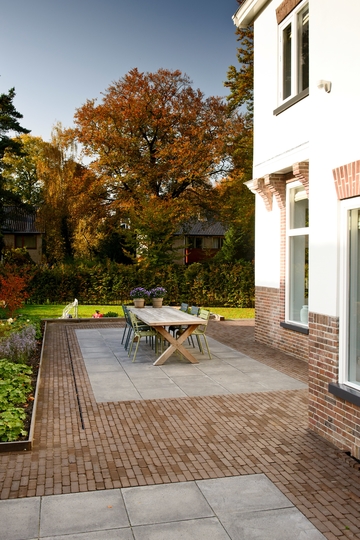
Concrete slabs
Concrete slabs are available in a variety of colours, tints, dimensions, and reliefs. There is huge variation. Concrete slabs are often used to imitate authentic materials such as natural stone and ceramic. The drawback of concrete slabs is that they lose their colour over time. This will make the paving pale, and it will cease to have the appearance that you chose it for. You can purchase variants with coatings to counter this, but these are in a different price segment altogether. The question is then, do you still want to opt for concrete? Concrete can also suffer from a white haze known as lime efflorescence.
Concrete slabs are often porous, which is a gift to green deposits. You can obtain slabs in various thicknesses and large sizes. Concrete slabs are almost always laid in a sand bed and, depending on the size, thickness, and surface finish, can usually be laid in the same was as clay pavers.
Gravel, shells, and bark chips
Gravel or shell paths give a garden an attractive accent. Gravel can be obtained in different colours and types. It is a playful form of surface covering that is relatively inexpensive and very common in gardens, especially in combination with borders. If you opt to use shells as decorative paving, you need to take the planting into account. Shells contain lime that can seep into the soil. Calciferous plants such as lavender and boxwood will be quite happy, but acid-loving plants will suffer as a result.
The drawback of gravel, shells, and bark chips is that they are a relatively soft form of paving. They are not especially comfortable to bare feet or high heels. Fine gravel can stick to shoes and find its way indoors, and if used on a driveway, can get thrown around by vehicles. Don’t forget to lay a weed barrier under coverings of this nature to prevent weeds from ultimately pushing through.

Use your creativity and combine garden paving
The garden paving that you choose is a major determining factor for the feel of your garden. Clay paving is always a good choice, and a good investment, but you don’t necessarily have to opt for just one material. The various types of paving can be combined very effectively. Large natural stone slabs take on a wholly different appearance if combined with clay pavers.


